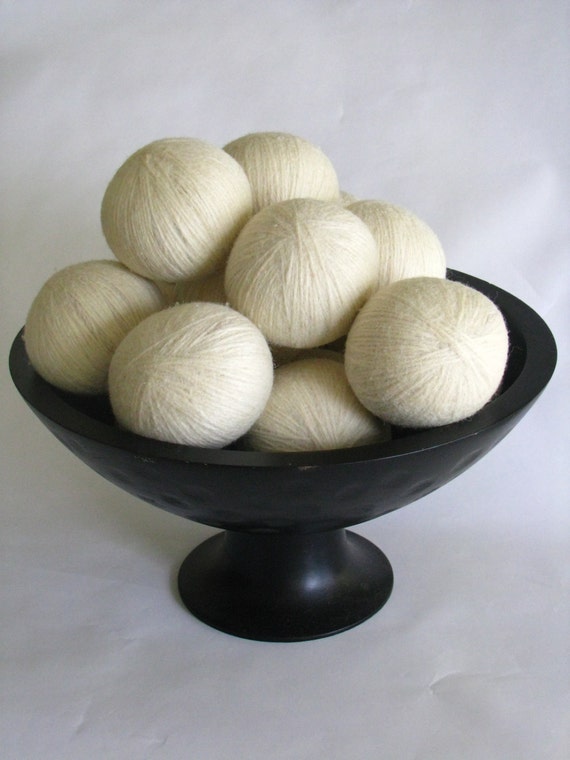The wool dryer balls work by absorbing moisture and circulating air while your clothes tumble in the dryer. When the dryer balls absorb the moisture, the heat then turns them into little steamers to help reduce wrinkles. The more dryer balls you use the quicker your clothes will dry, we recommend 3 to 5 balls per load. As the dryer balls tumble your clothes they help soften them and reduce static electricity. Best of all wool dryer balls last for at least two years, but most of the time much longer, making them budget friendly!
*Static may still occur if you over dry your clothing or dry synthetic fibers. If you are drying synthetic fibers, I suggest taking them out before they are completely dry and then finish drying the rest of your load to avoid static cling. I have also learned that putting a safety pin on the inside edge of your polar fleece will reduce static, give it a go.
Why choose wool dryer balls over traditional dryer sheets? When I was growing up, I grew up in two households, one that was loyal to heavily perfumed products, I won't mention brands, and one that used products with less dyes and perfumes. When my clothes were washed and dried in the perfumed products, my skin itched like crazy, my nose would itch and burn and I would get headaches. When my clothes were washed and dried in the more natural products, I didn't have any reactions. Today I still use a detergent that is free of dyes and perfumes, a splash of white vinegar and my trusty dryer balls; my laundry is sparkly clean, odor-free and soft.
Dryer sheets are full of harmful perfumes and chemicals that are embedded in the fabric and released to the skin over time. Our skin does not only expel toxins, but absorbs them as well. While the long-term effects of using dryer sheets themselves have not been studied, the chemicals in them have been. It used to be that the ingredients of dryer sheets were listed on the box, now it simply says: perfumes and catonic softeners. Well, what exactly is in those perfumes and catonic softeners and what are their effects? Here you go: Certain ingredients release formaldehyde, which is known to cause cancer in laboratory tests. Among other softener components are benzyl acetate (linked to pancreatic cancer), benzyl alcohol (an upper respiratory tract irritant), and chloroform (a neurotoxin and carcinogen). Some chemicals are neurostimulants or irritators and may be linked to central nervous system toxin exposure symptoms like headaches, disorientation, mood swings, numbness in face or extremities, memory loss, or irritability.
Most fabric softeners use petroleum-based chemicals which deplete a non-renewable source and are not easily bio-degradable.
I hope this information was helpful. There are many different dryer balls out there and whether you choose mine or others, please look for natural, un-dyed wool and natural essential oils, never perfume oils. If someone offers scents like fresh linen, apple, cherry, chocolate, pumpkin, etc., I would be wary as these are not usually natural compounds or essential oils. There are plenty of lists of true essential oils online to reference.
Sources: http://www.scientificamerican.com/article/greener-laundry/
http://en.wikipedia.org/wiki/Fabric_softener
http://www.ehow.com/about_5541944_dangers-cationic-softeners.html

No comments:
Post a Comment